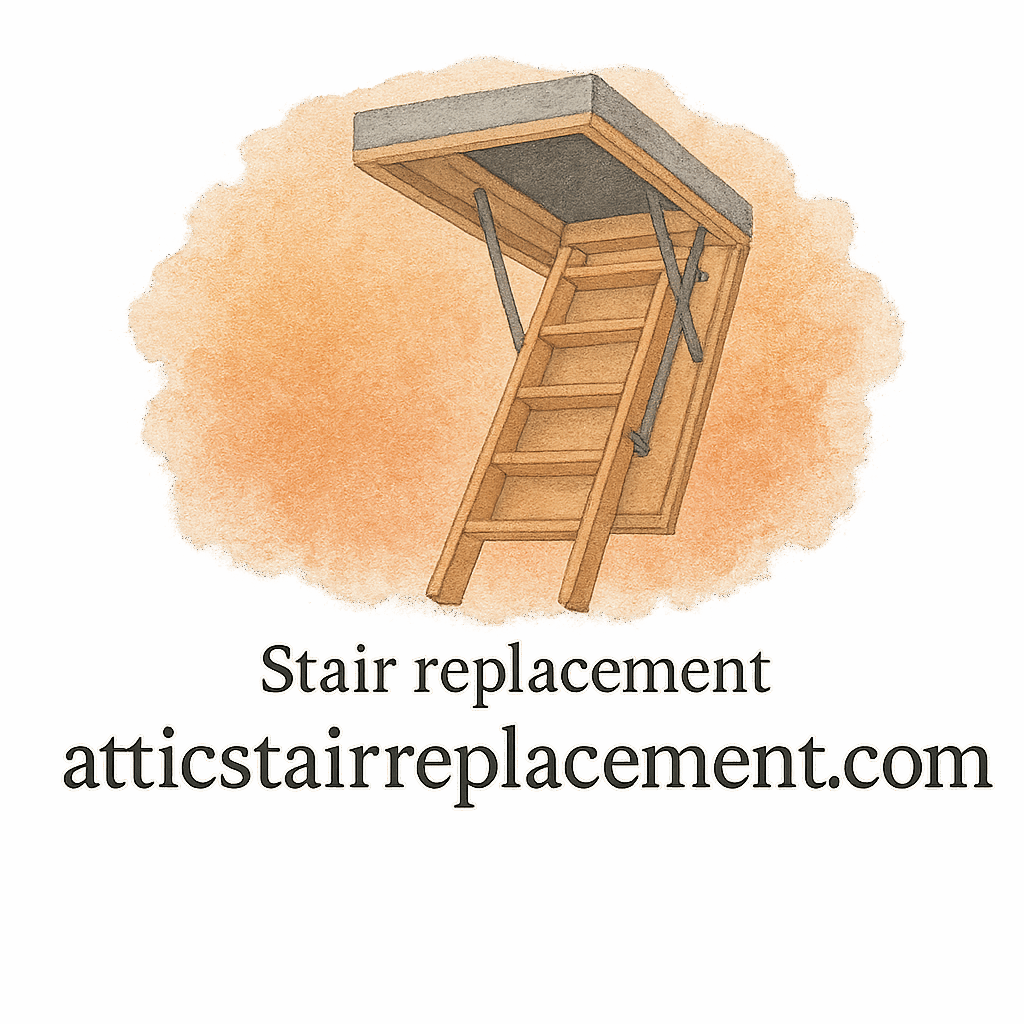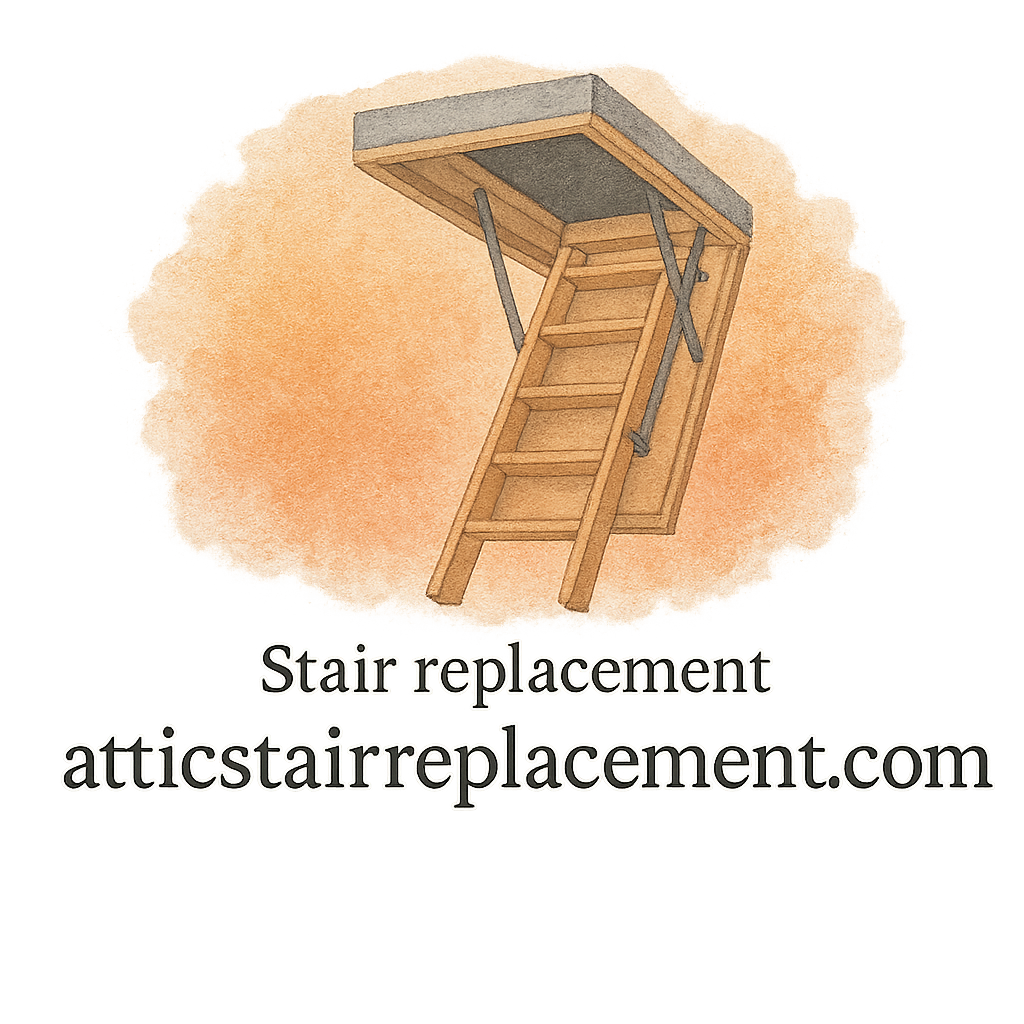Introduction
Replacing your attic stairs might sound like a simple weekend project, but if you’re not careful, it can turn into a risky endeavor. From splintered wood to wobbly ladders, unsafe installations can cause injuries and costly damage. That’s why following expert safety tips for attic stair replacement at home is essential.
In this guide, I’ll walk you through nine crucial safety tips that not only make your attic stair replacement smoother but also keep you and your family safe. Whether you’re tackling a DIY installation or considering hiring a professional contractor, these insights will help you avoid common mistakes and achieve a sturdy, reliable setup.
Why Safety Matters in Attic Stair Replacement
Think of attic stairs as the bridge between your home’s living space and its hidden storage. If that bridge is weak, improperly installed, or poorly maintained, accidents are inevitable. Many homeowners underestimate the risks, but falling from an attic ladder or misjudging weight capacity can lead to serious injuries.
Safety isn’t just about avoiding accidents—it’s about ensuring long-term durability, ease of use, and confidence every time you climb up. A well-installed attic stair system also enhances the value of your home improvement projects.
Tip 1: Choose the Right Type of Attic Stairs
Folding vs. Telescoping vs. Scissor Stairs
Not all attic stairs are created equal. Folding ladders are the most common, but telescoping and scissor-style stairs may offer better durability and compactness. Choosing the right type depends on your attic’s size, ceiling height, and storage needs.
For example, folding stairs are budget-friendly and straightforward to install, while scissor stairs are heavy-duty and built for frequent use.
Material Considerations: Wood vs. Aluminum
Wooden attic stairs often look great but may warp or weaken over time. Aluminum, on the other hand, is lightweight, durable, and resistant to pests. If you’re aiming for a durable, long-lasting solution, aluminum may be your best bet.
Tip 2: Inspect the Existing Attic Opening
Measuring Dimensions Accurately
Measure twice, cut once—it’s the golden rule for attic stair replacement. Accurate dimensions ensure your new stairs fit snugly without forcing or leaving dangerous gaps. A poorly measured opening is a common installation mistake homeowners make.
Checking Structural Integrity
Before installing, inspect the joists and surrounding framework. Look for cracks, weak spots, or water damage that could compromise stability. If the framing isn’t solid, your new stairs won’t be safe, no matter how well you install them.
Tip 3: Use Proper Tools and Safety Gear
Essential Tools You’ll Need
A drill, level, saw, hammer, and measuring tape are standard. Don’t forget wood screws, brackets, and possibly shims for leveling. The right tools can mean the difference between a smooth project and a frustrating one.
Safety Equipment Checklist
Safety glasses, gloves, dust masks, and non-slip shoes are non-negotiable. Climbing into a dusty attic without protective gear is like walking into a battlefield unarmed—you’re setting yourself up for injury.
Tip 4: Secure the Ladder During Installation
Temporary Bracing Techniques
Use temporary braces or clamps to hold the stair frame steady while you secure it permanently. This prevents shifts that could cause injuries or crooked installations.
Avoiding Shifts and Wobbles
An unstable ladder frame is a disaster waiting to happen. Test stability as you go by applying light pressure before tightening bolts. It’s better to catch a wobble early than after everything is screwed in.

Tip 5: Follow Manufacturer Instructions Carefully
Reading Before Cutting or Drilling
It may be tempting to skim the manual, but every model has specific installation requirements. Cutting corners here leads to dangerous shortcuts.
Common Mistakes to Avoid
Skipping hardware, mixing screw types, or ignoring weight ratings are classic pitfalls. That’s why seasoned installers always emphasize reading instructions first.
Tip 6: Get Help from a Second Person
Teamwork Improves Safety
Installing attic stairs is not a solo sport. A second person can hold ladders, steady frames, and help with lifting. Think of it as having a co-pilot—you’ll get the job done faster and safer.
Lifting and Positioning Safely
Attic stair frames are bulky and heavy. Straining to lift them alone risks back injury and a crooked fit. Two sets of hands make alignment much easier.
Tip 7: Pay Attention to Weight Capacity
Understanding Load Ratings
Every attic ladder comes with a weight capacity—ignore it at your own risk. Overloading can cause the stairs to fail suddenly. Always check the manufacturer’s label for maximum load.
Planning for Long-Term Durability
Even if you weigh less than the limit, consider future use. Will you carry heavy boxes? Will multiple people climb at once? Choose a model with a higher heavy-duty rating for peace of mind.
Tip 8: Ensure Proper Attic Lighting and Ventilation
Visibility Reduces Accidents
Climbing in the dark is asking for trouble. A well-lit attic and stairway minimize tripping hazards. Simple LED strip lights or battery-powered lamps can do wonders.
Preventing Moisture Damage
Good ventilation prevents dampness, which can weaken wood stairs and rust metal ones. Think of ventilation as your attic’s breathing system—it keeps everything fresh and stable.
Tip 9: Perform Regular Maintenance and Inspections
Tightening Bolts and Hinges
Bolts, hinges, and brackets loosen over time. A quick monthly check ensures your stairs remain safe and sturdy.
Spotting Early Signs of Wear
Look for cracks in wood, rust on metal, or squeaks when climbing. These are early warning signs. Address them promptly before they turn into major maintenance and repair projects.
When to Call a Professional Contractor
Complex Installations
If your attic opening needs resizing, or you’re dealing with unusual ceiling heights, it may be beyond DIY territory. A contractor has the tools and experience to handle tricky jobs.
Safety Risks Beyond DIY Skills
If you’re not confident balancing on ladders or handling power tools, it’s safer to hire an expert. Sometimes peace of mind is worth the cost. For more expert advice, professionals can guide you to the safest options.
Conclusion
Attic stair replacement is one of those projects that seems simple but demands precision, planning, and caution. By following these nine expert safety tips, you’ll not only avoid injuries but also ensure a solid, durable installation that adds value to your home.
Whether you’re a seasoned DIYer or a homeowner taking on your first big home project, safety should always be your top priority. And if at any point the task feels overwhelming, don’t hesitate to bring in a professional.
FAQs
1. What is the safest type of attic stairs?
Scissor-style and heavy-duty aluminum ladders are often the safest, thanks to their strength and stability.
2. How often should I inspect my attic stairs?
A monthly quick check plus a detailed inspection every six months is ideal.
3. Can I install attic stairs alone?
It’s not recommended. Always have a second person help to avoid injuries and alignment issues.
4. Do attic stairs have weight limits?
Yes. Every model lists a load rating. Always choose one that exceeds your household’s needs.
5. Should I hire a contractor for attic stair replacement?
If the job involves resizing openings, heavy lifting, or advanced tools, hiring a contractor ensures safety and quality.
6. What are common mistakes in attic stair replacement?
Incorrect measurements, ignoring manufacturer instructions, and skipping safety gear are the most frequent mistakes.
7. How can I extend the life of my attic stairs?
Perform regular maintenance, tighten bolts, lubricate hinges, and keep the attic well-ventilated to prevent damage.


